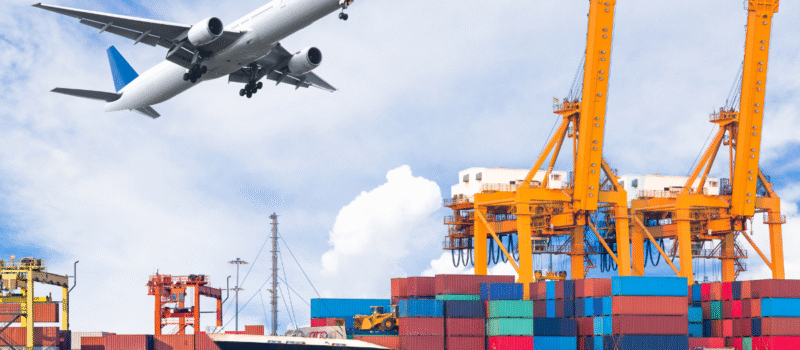The Evolving Landscape of Global Ocean Freight
The world of ocean freight forwarding continues to evolve rapidly as global trade expands and supply chains become increasingly complex. By 2025, freight forwarders are navigating a mix of digital transformation, environmental regulations, and geopolitical disruptions. Ocean freight remains the backbone of global commerce, carrying nearly 90% of traded goods by volume. However, the demands of modern trade—ranging from sustainability commitments to technological expectations—have introduced new challenges that businesses must understand and adapt to in order to remain competitive.
Supply Chain Disruptions and Volatility
One of the greatest ongoing challenges in ocean freight forwarding is the uncertainty of worldwide supply chains. Port congestion, strikes, and weather disruptions can lead to extreme delays and cost overruns. The COVID-19 crisis underlined the exposure of global logistics networks, and even as global trade starts to recover, there are continuing bottlenecks. In 2025, freight forwarders are prioritizing flexibility—establishing backup plans, diversifying port possibilities, and more nimble routing strategies. Companies that work with veteran forwarders such as North Sea Agency have the advantage of anticipatory planning and local knowledge that buffer against disruptions efficiently.
Increased Fuel Prices and Environmental Policies
Sustainability and environmental stewardship have taken center stage as the shipping industry’s future. New International Maritime Organization (IMO) rules are making carriers cut carbon emissions and switch to cleaner fuels. Although these efforts are crucial for the world, they also contribute to higher operation costs. Fuel-efficient ships, substitute fuels like LNG, and carbon offsetting schemes are becoming the norm for ocean freight forwarding providers to consider. Companies have to reconcile compliance with affordability, mostly pursuing long-term alliances with logistics providers who are dedicated to environmental and cost efficiency.
Port Congestion and Infrastructure Constraints
In spite of automation and technological innovation, port congestion remains an issue in global trade efficiency. Large ports in Europe, Asia, and North America are facing capacity constraints as volumes of containers increase. Smaller ports, although providing faster turnaround, might not have the infrastructure for handling large volumes of cargo. For freight forwarders, the biggest challenge is to coordinate routes with reduced congestion without compromising on competitive transit time. Companies like North Sea Agency, which operate strategically located ports, use local knowledge and flexibility in scheduling to counter such bottlenecks.
Digital Transformation Impact
Technology is transforming ocean freight forwarding, but it also challenges conventional logistics operations. Adoption of blockchain, artificial intelligence, and real-time monitoring systems is costly and needs high levels of digital literacy. Predictive analytics and automated booking systems have enhanced shipping’s visibility and transparency but are potentially difficult to match for mid-tier and small freight forwarders. The capacity in 2025 to incorporate digital aids seamlessly into operations determines the effectiveness with which a forwarder is able to adapt to client needs and movement in the global market.
Geopolitical Uncertainty and Trade Policy Volatility
International trade has never been free from politics and economics, and 2025 is no different. Tariff differences, sanctions, and regional wars still dictate trade lanes and freight volumes. For ocean freight forwarding service providers, geopolitical uncertainty translates into coping rapidly with changing regulations and border requirements. Companies need to be aware of shifting trade policies and engage forwarders who have expertise in compliance across several jurisdictions. Local partnerships and agility are critical to maintaining the flow of cargo without a hitch despite political uncertainty.
Lack of Expert Maritime and Logistics Personnel
Another emerging challenge in the ocean freight forwarding industry is the lack of competent professionals. From logistics planners to port operators, the sector experiences a talent deficit fueled by retirements and few new entrants. Contemporary logistics demands knowledge of both traditional shipping and digital technology, meaning that training and staff development are paramount. Forward-thinking businesses that spend time and money upskilling their personnel are more likely to offer dependable, high-quality services within an increasingly competitive landscape.
Cybersecurity Threats in International Logistics
With digitalization also comes an added layer of risk—cybersecurity. Shipping lines, terminals, and freight forwarders are being increasingly targeted by cyberattacks designed to halt operations or pilfer data. One breach can bring down entire logistics chains. With more ocean freight forwarding depending on interconnected systems, protecting digital infrastructure is now the biggest priority. Stringent cybersecurity controls, employee sensitivity programs, and secure data-exchange platforms are key building blocks of contemporary freight management.
The Drive Towards Data Transparency and Cooperation
The future of ocean freight forwarding relies, to a large extent, on supply chain collaboration. Carriers, shippers, and logistics providers are more and more exchanging real-time information to drive route optimization and minimize inefficiency. Such openness is valuable to all parties but necessitates a change in how information is shared and managed. Cloud-based logistics platforms are simplifying the process of companies working together securely and having access to accurate shipment information, encouraging more accountability and trust in the industry.
Adjusting Through Innovation and Specialism
Although there are challenges, companies are responding by embracing innovation, diversification, and local alliances. Seasoned maritime service firms such as North Sea Agency illustrate how mastery of regional port operations, compliance management, and digital technology can deliver results. Success in ocean freight forwarding in 2025 will rely on achieving harmony between technology uptake, sustainability, and human acumen. Visionary organizations that successfully integrate these factors will be resilient in the face of an uncertain global trade regime.
Conclusion
The obstacles defining ocean freight forwarding in 2025—from sustainability to digital disruption—are redefining the way global logistics function. To survive this new environment, companies need to focus on flexibility, technology integration, and strategic alliances. The future of the industry will belong to those who see obstacles as opportunities for innovation. Through experience, agility, and collaboration, freight forwarders and companies alike can make their supply chains more resilient and guarantee consistent growth in a dynamic world.





